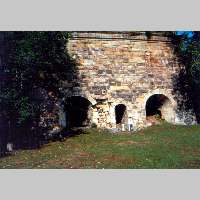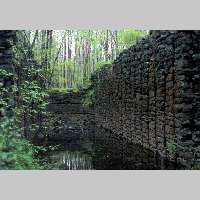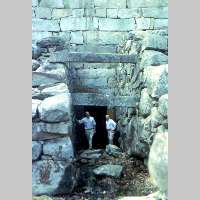

mr Richard Tufnell
The origins and breadth of use of Dry Stone Masonry in the United States
The early settlers to the United States were almost entirely farmers, or practised related trades - blacksmithing, or transportation of goods for example. The first farming practises used timber in great quantities, harvesting the native forests in the first instance to clear the land, then
to construct buildings and to provide fuel. Such was the rate of tree felling that in many areas within as little as ten years of primary settlement, timber became a scarce resource. The people were therefore forced to use the fine building stone found on and beneath the ground through necessity, as well as by choice owing to the advantages of stone construction, employing the high standard of skill that many immigrants possessed.
With a large pool of skilled masons and rapidly increasing prosperity, dry stone construction methods were employed wherever stone was available. By the middle of the 19th century, huge areas of the country, such as Kentucky and Tennessee looked very similar to the European landscapes, with walls edging every field and lining every road, houses, barns, spring and ice houses, foot and traffic bridges, culverts and retaining walls for the railways, and much else besides, such as root cellars and elevated 'mud paths'. Some of these landscapes mimic specific areas in Europe, such as the terraced vineyards of the Napa Valley in California, settled largely by the Swiss and the French.
Industry too was largely founded on dry stone, an interesting development that was less based on European roots. The ability to move goods and materials used rivers and canals, for mountain ranges made long distance road transport difficult and expensive. The canals required large clay-backed dams and many thousands of kilometres of retaining walls, some of which were very large. Industry required mills, iron ore furnaces, warehouses, aqueducts, distilleries and more, all using vast amounts of dry stone.
Today, only a fraction remains; abandoned remnants of a once great enterprise. However, after more than a century of total neglect, interest in dry stone is awakening once more in the United States.
Za povečavo kliknite na sliko
Click on picture to enlarge





